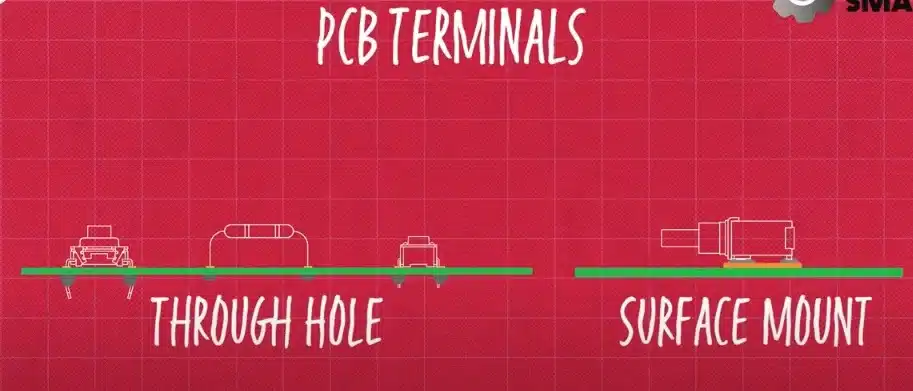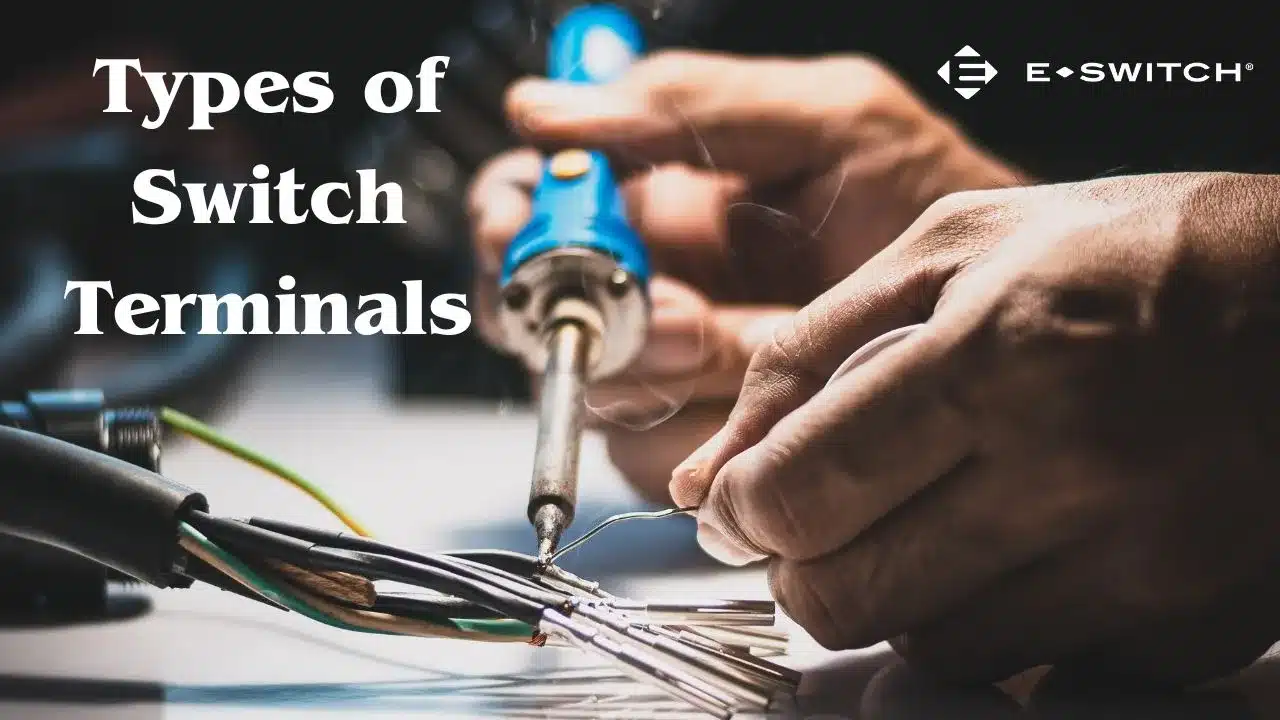What are the different types of switch terminals available and how do they differ?
What is a Switch Terminal?
Firstly, what is a switch terminal (or termination)? Simply put, the terminal is the component used to connect the circuit to the switch to enable it to function correctly. The terminals of a switch conduct electricity to and from the switch’s contact point.

The termination of a switch all depends on the final application it will be used for.
The Different Types of Switch Terminals
Solder Lug Terminals
Solder lug terminals are one of the more common forms of switch termination used in panel mounted switches. The switch is fitted with lugs generally found on the underside of the switch. Wires are then soldered to the lugs to form a solid connection through which electricity can pass.
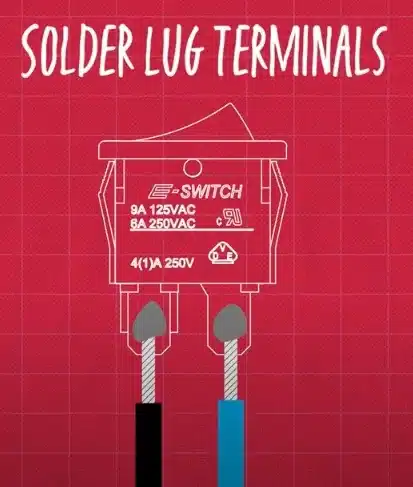
Because of this extra step of sourcing and connecting the wires, solder lug terminals may not be suited for large scale productions, however, it still remains the best solution for high current loads.
Screw Terminals
Screw terminals are exactly as they sound. A wire is connected to the switch by wrapping the wires or threading the ring connector through the screw terminals and then tightening it to form a solid connection.
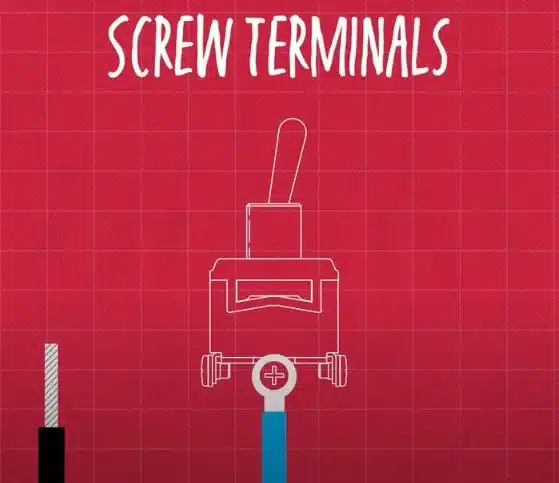
If you’ve ever replaced an outlet or a light switch in your home then you’ve likely come across this method before.
Quick Connect Terminals
Quick connect terminals are comprised of a female and male connection. The male connection tabs are attached to the switch, which is then placed in the compatible female connection to form a quick and practical bond.
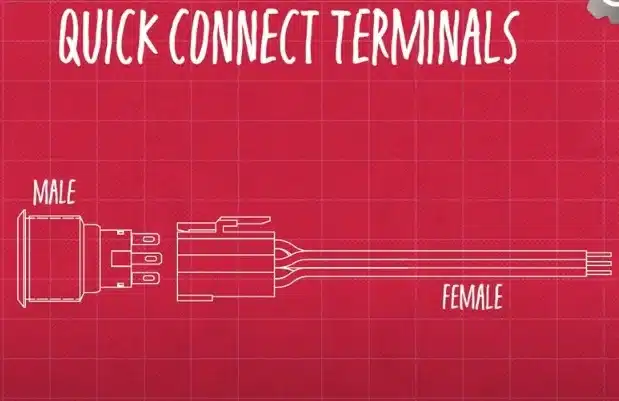
This method works well when a small number of wires are to be used. It’s also useful when replacing a damaged switch as no additional soldering of wires is needed.
Wire Leads
Wire leads are another popular choice, namely for convenience and cost effectiveness. Prewired leads extend from the rear of the switch, where they can be easily attached to the circuit in the most convenient way for the current configuration. Often the wire connection to the switch will be sealed by a molded boot or epoxy resin, meaning the switch is sealed, providing even greater protection from dust and moisture.
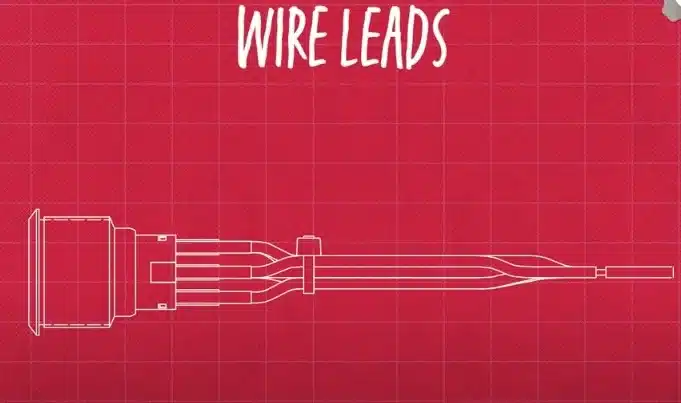
PCB Terminals
Finally, that brings us to printed circuit board (PCB) terminals. Either the through hole or surface mount method is used to connect the smaller switches to the printed circuit board.
